By Dan Weisz
Below are a selection of recent raptor photos. Some can be seen in the wider Foothills area. Others are around Pima County. (And on Monday, we saw an Osprey flying over Oracle Road, so you never know what may be in our airspace or just flying through!) Enjoy!
Those Burrowing Owls are irresistible. I’ve been saving these last two shots for a while from a recent trip to Marana’s agricultural areas. Here the bird is on one leg contemplating the universe.
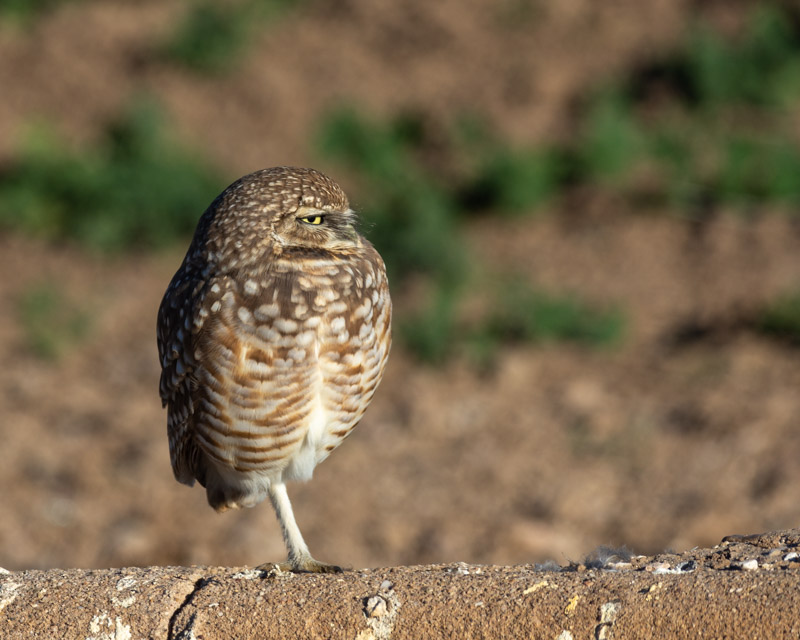
But things get more animated when it looked at me. I used to get that kind of look from my kids when they were teenagers!
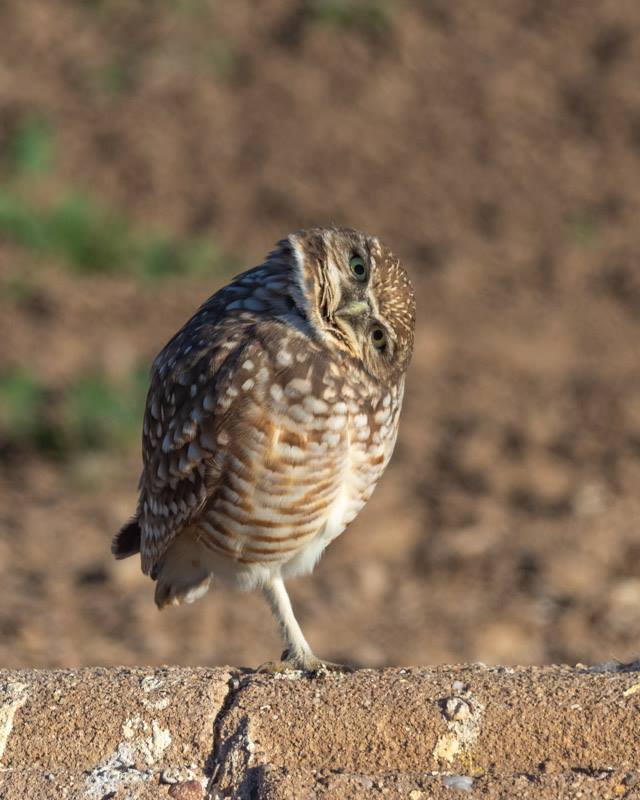
Northern Harriers were once called Marsh Hawks. They are long-winged hawks with an owl-like face whose hunting style is very unique. They fly low over grasslands or marshes gliding in a tippy kind of flight, weaving back and forth as they go. They do use their hearing as well as sight to find prey. The buffy underside of this bird lets us know it is an immature bird. This bird has been hanging around Sweetwater Wetlands.
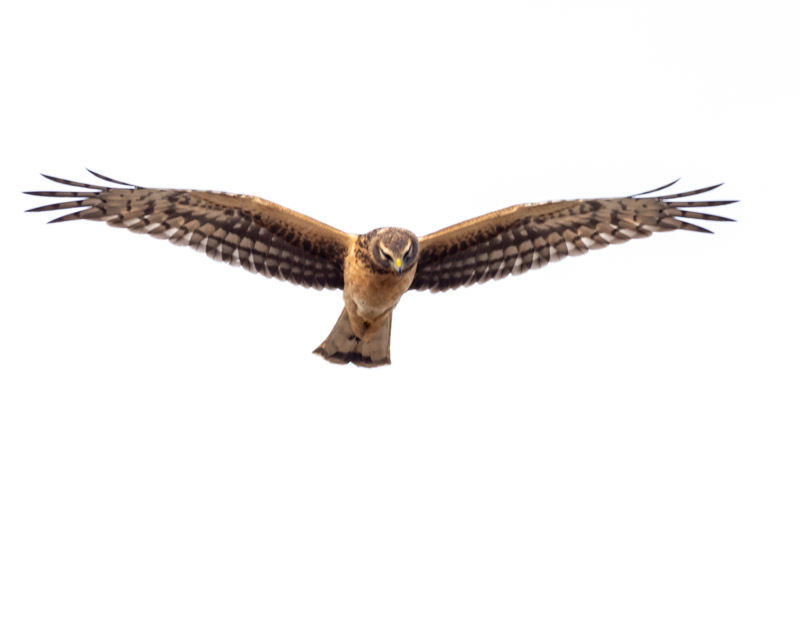
Northern Harriers are winter visitors and spend the breeding season of spring/summer in the far north.
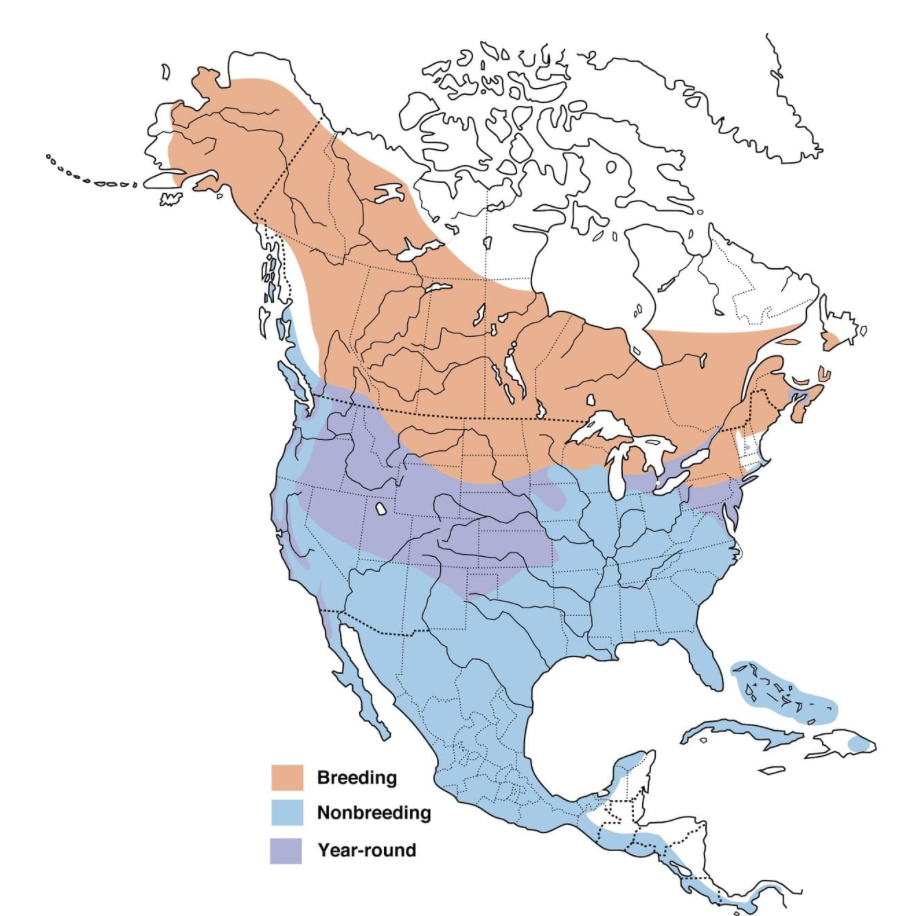
Another look at the Harrier as it flew directly over me at Sweetwater Wetlands.
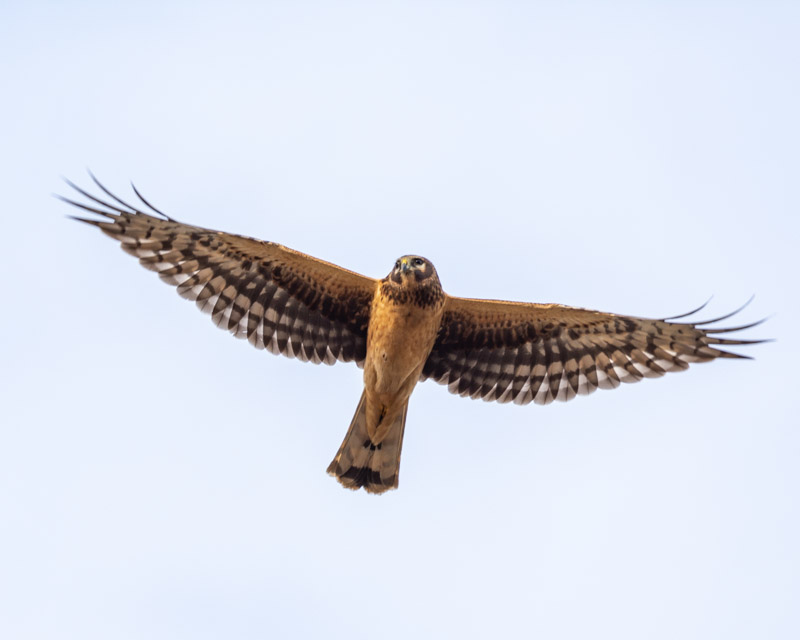
American Kestrels are local residents year-round but many other Kestrels fly south for the winter which helps to make these birds much more prevalent in southern Arizona. This couple was warming up in the morning sun near the Green Things Nursery along River Road. The bird below was keeping one leg warm and tucked in under her feathers. She is a female as indicated by her brown wings, barred tail and the brown streaking on her breast. Both the female and the male kestrels have the two black slashes on their face.
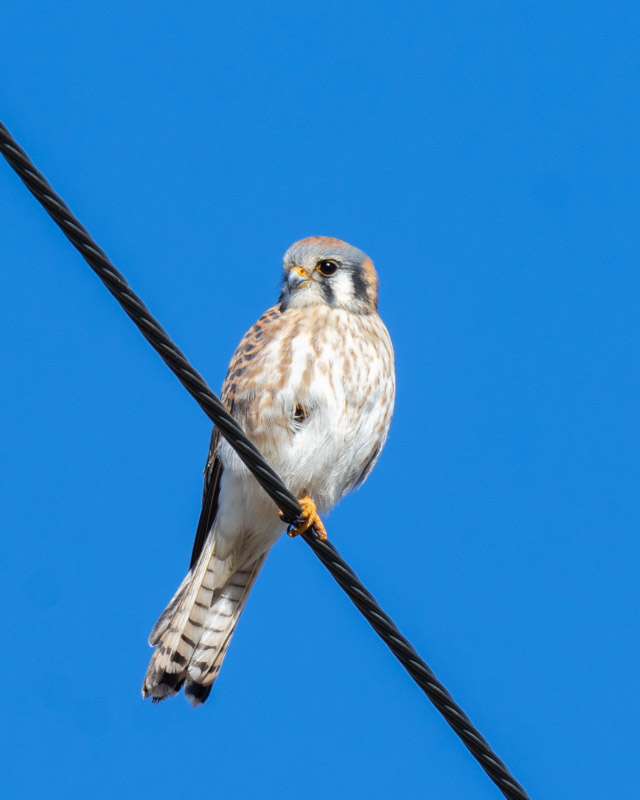
The male was on a nearby telephone pole. He was fluffed out to try to stay warm. Males have a spotted breast. Kestrels are North America’s smallest falcons.
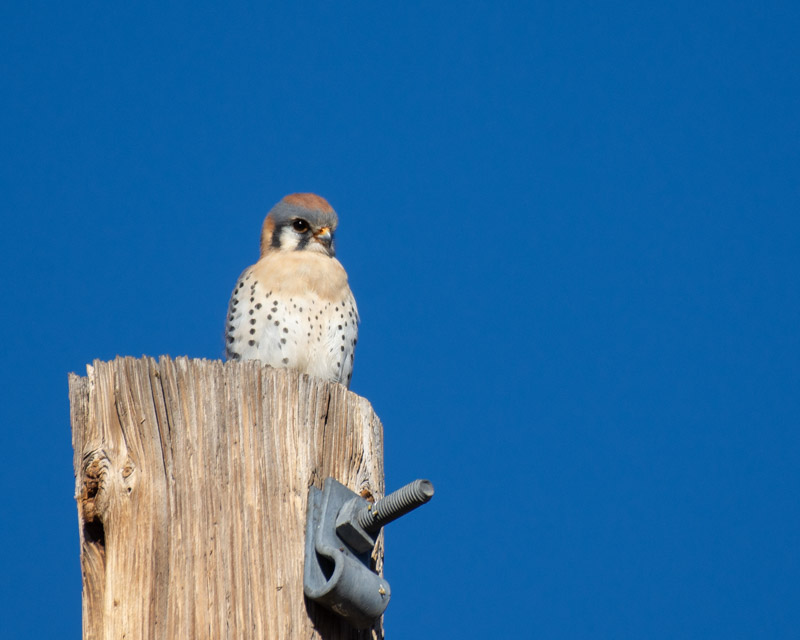
At Sweetwater, a Peregrine Falcon perched for a bit one afternoon. Peregrines are falcons as are Kestrels, but they are much larger and faster. Peregrines have that black “helmet” on their heads. You can see its very long toes that are used for wrapping around their prey.
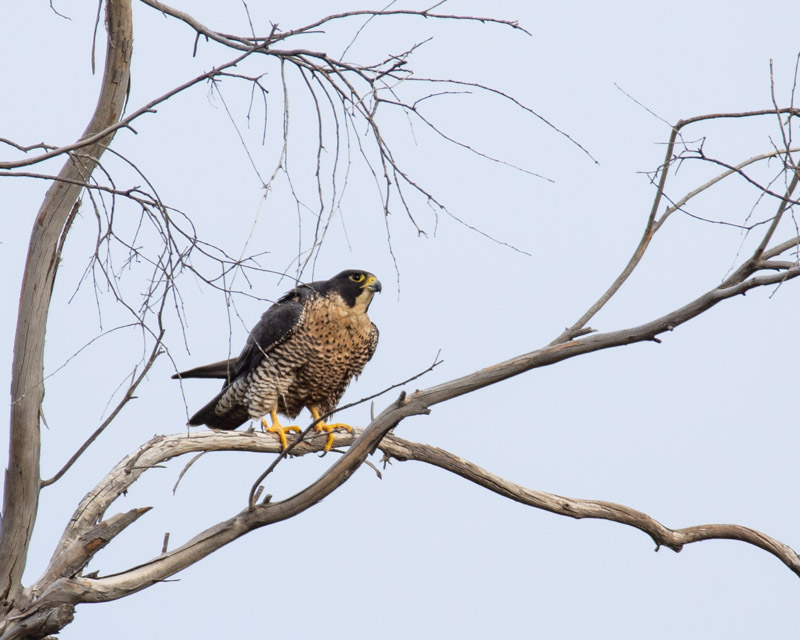
The final birds today are Black Vultures. I was west of town and north of Ajo Way participating in the Avra Valley Christmas Bird Count last weekend on a gray and very cool morning. Suddenly, a flock of Black Vultures flew over in an easterly direction. They flew by in small groups but eventually 57 passed over me.
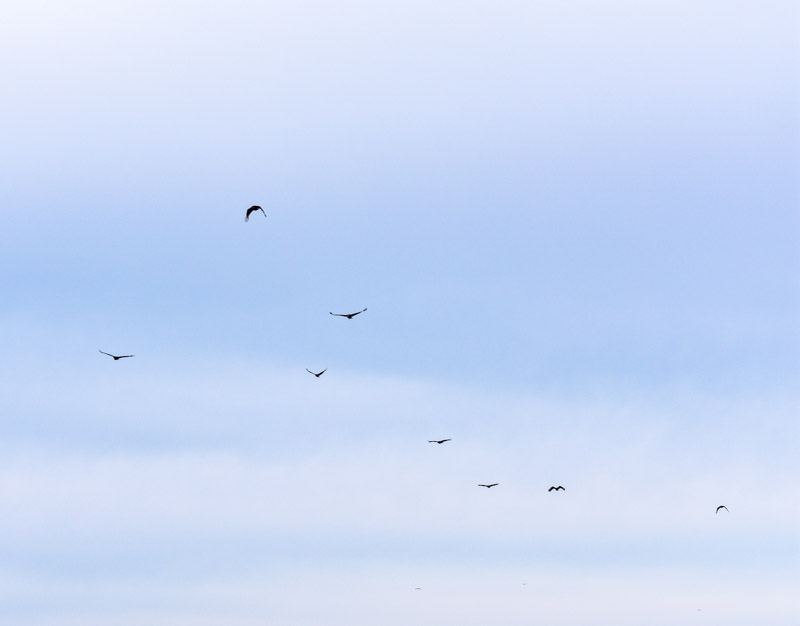
One Black Vulture perched on a telephone pole. Black Vultures are less well known than their cousins, the Turkey Vultures. They are a more compact bird that depend more on their sight than their sense of smell to locate carrion but Black Vultures are smart enough to associate with Turkey Vultures in order to follow them to food sources.
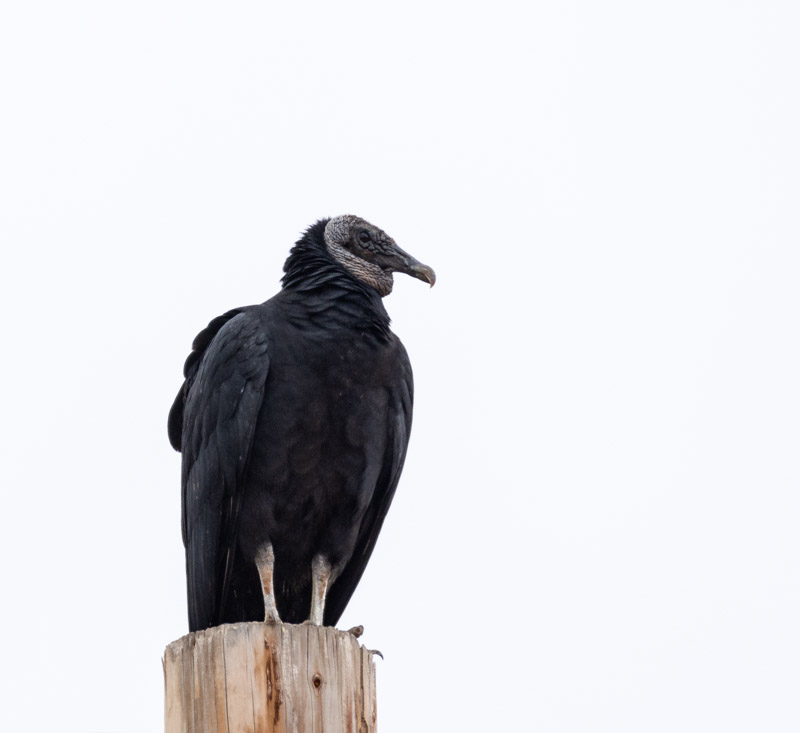
Black Vultures’ legs often appear to be white (as is the case in Turkey Vultures). The white look is from the birds defecating on their own legs, using the evaporation of the urine or feces to cool itself. The white uric acid streaks the legs. Works for them
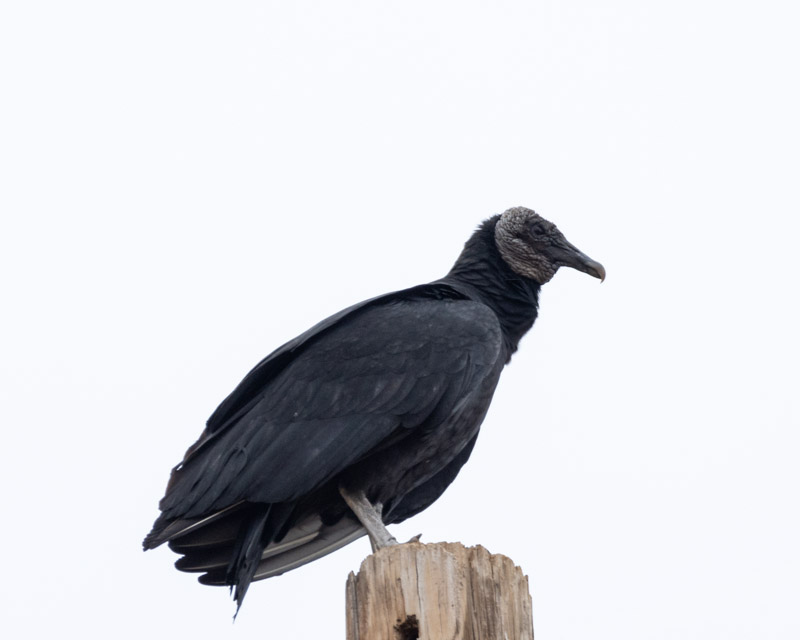
In flight, the wingtips or “fingers” are white.
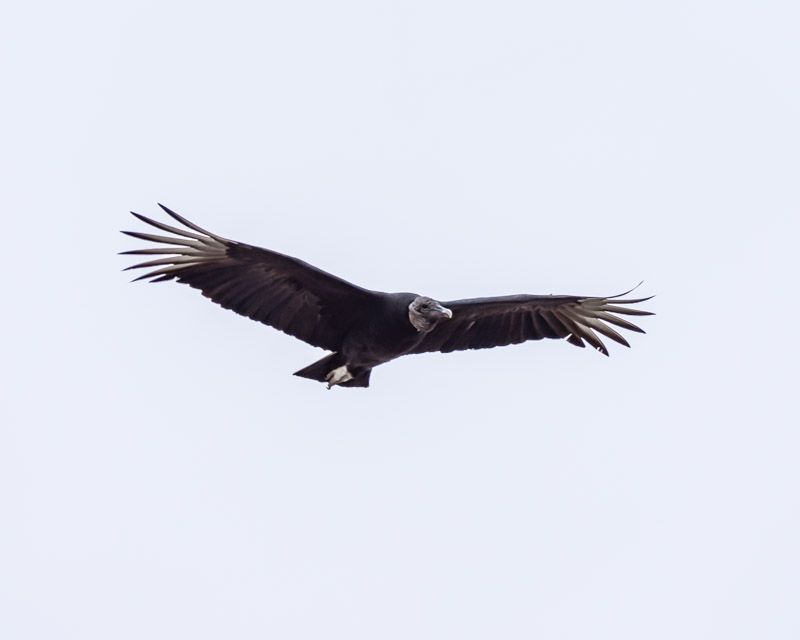
These two Black Vultures were having some kind of brief discussion before the bird on the left flew off.
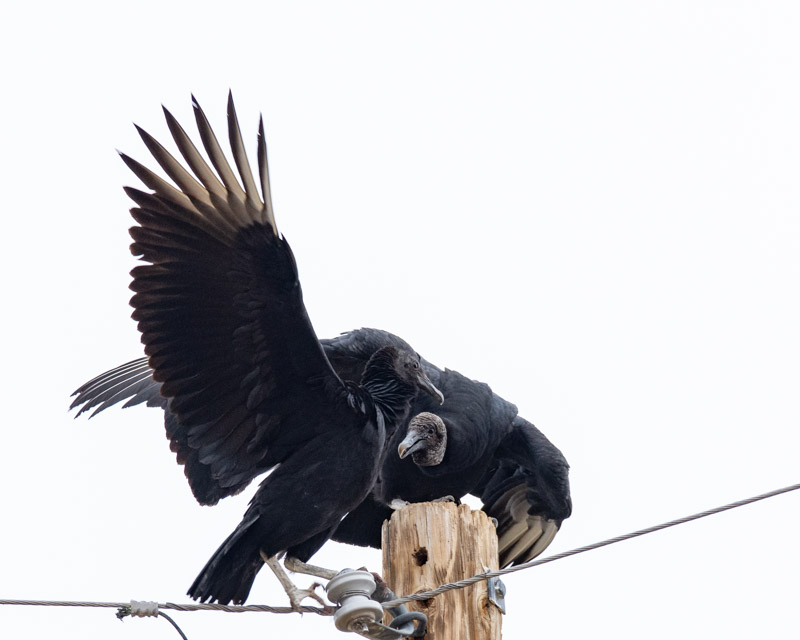
Winters bring a large number of raptors to southern Arizona. Keep scanning the sky as you drive around and be sure to check out each telephone pole you pass this season. You never know what you might find.
